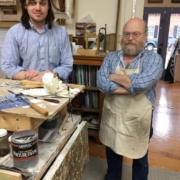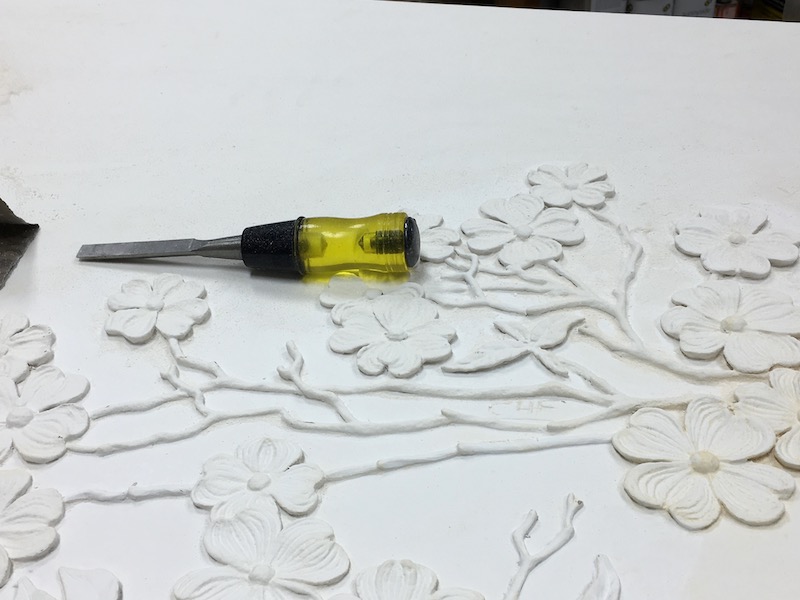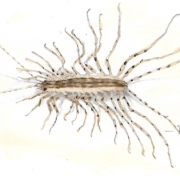Longtime archivist retires after three decades
By Rebecca Maynard
Clarke County Historical Association (CCHA) archivist Mary Thomason Morris has retired after more than 30 years, but her infectious enthusiasm for preserving local history has not diminished. She has been with the organization since 1987, during which time she has seen incredible changes.
“One thing I love to focus on is how the dissemination of information has changed from 1987 to today,” she said. “When I look back, when I came on board, there was no computer and I was working on index cards. Everything had to be written out unless I typed it on the typewriter, and there was no way to get information out about what we had unless people came in.”
“Today, it’s all online and accessible through the Google index,” Morris said, noting that people as far away as Dublin, Ireland, have accessed the information she has archived.The CCHA archive, found at www.clarkehistory.org, contains church and burial records, historical photographs, newspaper files, maps, drawings, and other materials. A large portion of their archives is available to search online, and the search function is intended to be user-friendly even for those who are not computer literate.“K.I.S.S.,” Morris quipped when referring to the ease of the search function. “Keep it simple, stupid.”
In the late 1980s, Morris worked for the CCHA, Handley Library, and the Warren Heritage Society in Front Royal all at the same time before the CCHA became her sole employer in 1990.
“It was good that I was able to tap into all three of those county histories, because Warren and Clarke are the last two daughters of Frederick County,” she said, explaining that Clarke County was founded in 1836 and a number of planters from the Tidewater area sent their sons and enslaved people to the county.“
One of the first people I had contact me was a lady from Georgia who said she knew her great-grandfather was in Virginia during the Civil War,” Morris said. The man had deserted and was sent back to a different regiment, but after July 1864, the family never knew what became of him.
Morris wondered whether he had been killed in Berryville’s Battle of Cool Springs. She was able to verify her hunch thanks to a book with the list of names in the Confederate section in Mt. Hebron Cemetery in Winchester. “I was able to write these folks to tell them, after 130 some years, and they were able to put a marker on his gravesite beside his wife saying where he died and his death date, after generations of no one knowing,” she said.“
At that time, I was still working with pencil and paper,” she recalled. “To me, watching the progression from then to now is the biggest thing, to see things go from boxes on a shelf that maybe no one would look at for 50 years, and now they’re catalogued and indexed online.”
Local history doesn’t have to be grand or of great interest to those outside Clarke County for it to be important, Morris believes. “History can be people enduring their lives, for good or for bad,” she said. One of her goals in her 30 years with CCHA was to make sure that everyone in the county, regardless of circumstances or family history, was included.
“Mountain people, small farmers, people who came here after 1900, their history is as much Clarke as the Tidewater planters,” she explained.Morris also hopes that young people realize the importance of genealogy and local history and over the years enjoyed having fourth graders visit the CCHA office, where she would show them photographs on microfilm. On one occasion, she showed the children a photograph of a basketball player. “One little boy looked at me and said, ‘There’s my daddy!’ He figured out that his father and he were both history, and that people make history every day,” she said.
“Think of kids getting out of high school today, how many wars they’ve been through,” Morris said. “They don’t think they make history, but they do. Children are like trees: They need roots before they can stretch to the sun, and having a sense of belonging to a place are the main roots for a child, knowing that they are part of the history of a place.”
“Mary is so dedicated,” said CCHA director Nathan Stalvey. “Every historical association needs someone like her, who loves what she does. She’s inspiring, but she’s humble.”
“As for proud moments, my highest is when I passed the miller’s class and became a legal, bona fide grinding miller for the Burwell-Morgan Mill,” Morris said. ”You wear many hats in a small organization, including sometimes potty cleaner!”
Morris received CCHA’s Professional Achievement Award in 2004, and was awarded the Heritage Hero Award by the Mosby Heritage Area Association in 2016. She also helped Clermont Farm in Berryville catalog its collection and created a database of more than 3,000 people associated with the property over the years.
“Mary has never, ever been about attention grabbing,” Stalvey said. “She genuinely just loves what she does and people see that. It reflects back and that’s why people love to listen to her stories.”
Morris is stepping down for health reasons, but has been involved in the interviewing and hiring of her replacement, whom she plans to help become acclimated to the position. She also hopes to remain involved with CCHA on a volunteer basis.
“It’s all going to depend on health, but over the years I’ve said there’s a plank in the office for them to carry me out, because I always figured I’d never leave,” she joked. “I’m keeping the plank around. I can’t give up the CCHA and I can’t give up learning. If I stop trying to help, I stop living.”
Clarke County Historical Association is hosting a retirement party for Mary Morris Sunday, July 21, at 2pm, at the CCHA headquarters at 32 E. Main Street, Berryville, VA 22611.










